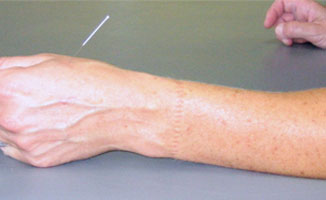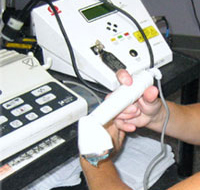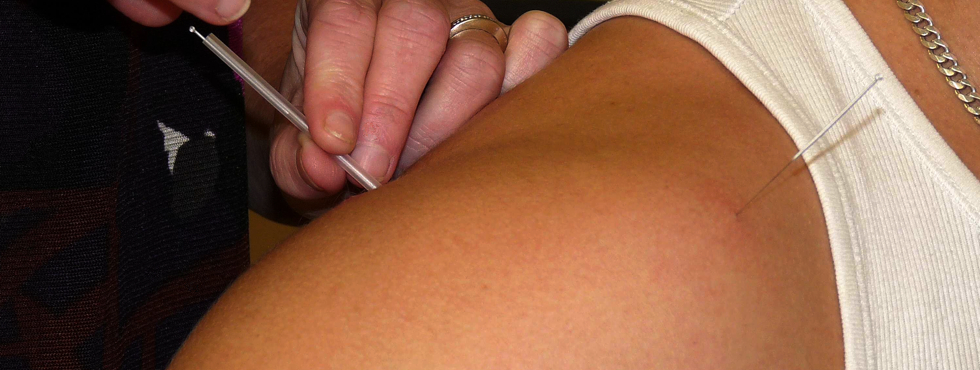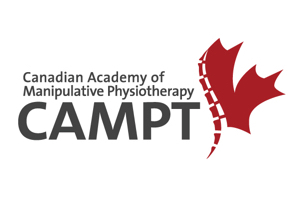Treatments
Education
Physiotherapists educate their patients about their conditions. Patients need to know what they can do to help themselves get better. Equally as important, patients need to know what to avoid so they don't cause themselves harm. By analyzing typical daily activities, the physiotherapist educates the patient about the "do's" and "don'ts". Empowering patients with knowledge about their condition helps prevent the problem from coming back.
Exercise
Physiotherapists design exercise programs that enable the patient to stretch tight muscles, strengthen weak muscles, and increase joint motion. Physiotherapists use manual therapy techniques to increase joint motion, muscle flexibility, and nerve mobility. These gains can be lost if the patient doesn't have the appropriate exercises. Exercise prescription needs to be individualized. Each patient is unique. Each patient's injury is at a different stage of healing. The patient's goals, overall conditioning, previous injuries all need to be considered by the physiotherapist as exercises are added or progressed. How many repetitions and how much weight are typical questions that can't be answered by an exercise sheet or the on-line exercise programs. Your physiotherapist knows which exercises are best for you, how they should be performed, and how many repetitions.
Manual Therapy
Manual therapy encompasses physiotherapy techniques that are performed by the hands of the physiotherapist to the patient's tissues. Manual therapy techniques performed by physiotherapists include:
- Joint mobilization: When a joint is stiff, often a patient cannot move the joint through its full range of motion. Joint mobilization is the physiotherapist moving the joint through range, often including the restricted range to free the joint. Joint mobilizations can be gentle or aggressive, depending on the irritability of the joint.
- Joint manipulation: When a quick thrust is applied at the end of range of motion of a restricted joint, to restore range of motion, it is called a joint manipulation.
- Muscle stretching: Tight muscles can restrict joint movement. Following a warm up, a physiotherapist can stretch a tight muscle and improve is flexibility. The patient is then educated how to safely stretch the tight muscle at home to maintain the movement gained at physiotherapy.
- Nerve mobilization: Nerves travel from the spine to the tips of the fingers and toes. Nerves pass through soft tissues such as muscles and fascia. Nerve movement can become restricted if they become tethered at soft tissue interfaces. Physiotherapists perform techniques to free up the nerves' mobility.
- Massage: Physiotherapists use their hands to manipulate soft tissues such as muscles and fascia. Massage can help muscles relax, reduce swelling, improve circulation, and reduce pain.
Acupuncture & Dry Needling
 Acupuncture is one of the oldest, most commonly used medical procedures in the world. Originating in China more than 3,000 years ago, acupuncture has become better known in the Western world since the 1970's. Acupuncture involves stimulation of anatomical points on the body by a variety of techniques. The most commonly used acupuncture technique involves penetrating the skin with thin, solid, metallic needles that are manipulated by the hands or by electrical stimulation. Most people feel no or minimal pain as the needles are inserted. Depending on which points are used, some people are energized by treatment, while others feel relaxed. This modality is used to promote circulation in an area to aid in tissue repair, pain relief and restoration of normal joint movement.
Acupuncture is one of the oldest, most commonly used medical procedures in the world. Originating in China more than 3,000 years ago, acupuncture has become better known in the Western world since the 1970's. Acupuncture involves stimulation of anatomical points on the body by a variety of techniques. The most commonly used acupuncture technique involves penetrating the skin with thin, solid, metallic needles that are manipulated by the hands or by electrical stimulation. Most people feel no or minimal pain as the needles are inserted. Depending on which points are used, some people are energized by treatment, while others feel relaxed. This modality is used to promote circulation in an area to aid in tissue repair, pain relief and restoration of normal joint movement.
Laser
 LASER stands for Light Amplification by Stimulated Emission of Radiation. The application of light to injuries and lesions stimulates healing and increases the quality and tensile strength of tissue repair. The light is absorbed into the cell creating energy that produces biological materials that help heal and repair damaged cells and tissues. LASER is used in wound care, tissue repair, inflammatory conditions and pain control.
LASER stands for Light Amplification by Stimulated Emission of Radiation. The application of light to injuries and lesions stimulates healing and increases the quality and tensile strength of tissue repair. The light is absorbed into the cell creating energy that produces biological materials that help heal and repair damaged cells and tissues. LASER is used in wound care, tissue repair, inflammatory conditions and pain control.
Ultrasound
 One of the most common modalities used in rehabilitation. Ultrasound is used to stimulate the repair of injured tissue and relieve pain. It uses high frequency sound waves, which cause molecules in the tissue to vibrate, producing heat and mechanical energy. This is sometimes termed a "micro massage". Ultrasound can be applied directly to the skin with a coupling gel or through a water medium. This modality can be used to treat soft tissue injuries, sports injuries, back and neck conditions, and many more injuries, all ranging from acute to chronic conditions.
One of the most common modalities used in rehabilitation. Ultrasound is used to stimulate the repair of injured tissue and relieve pain. It uses high frequency sound waves, which cause molecules in the tissue to vibrate, producing heat and mechanical energy. This is sometimes termed a "micro massage". Ultrasound can be applied directly to the skin with a coupling gel or through a water medium. This modality can be used to treat soft tissue injuries, sports injuries, back and neck conditions, and many more injuries, all ranging from acute to chronic conditions.
IFC
IFC stands for Interferential Current. IFC is a form of electrical stimulation used to treat pain, aid in tissue healing, and control swelling. As with TENS, tiny electrical impulses are induced into the tissues in the injured or painful area. This modality uses a variety of frequencies and most patients equate its sensation to that of a light massage. IFC has the potential to reach deeper tissues than TENS.
Muscle Stimulation
EMS stands for Electrical Muscle Stimulation. This is used to aid in contracting a specific muscle that needs to be strengthened. It may also be used to prevent or reduce muscle weakness.
TENS
TENS stands for Transcutaneous Electical Nerve Stimulation. TENS involves the passage of mild electrical currents through electrodes placed in various orientations on the skin over an affected area. This current is delivered to the electrodes by a small, portable battery-operated power pack connected to flexible wires. TENS is a non-addictive, non-invasive method of pain control. It is believed to work by interfering with the transmission of pain messages to the brain, and aiding in the release of endorphins, the body's natural pain killer.
Vestibular Rehabilitation
Vestibular rehabilitation therapy (VRT) is an exercise-based treatment program designed to promote vestibular adaptation and substitution. Your vestibular system is part of your inner ear and it provides you with a sense of balance and equilibrium.
Concussion Care
A concussion is a brain injury that cannot be seen on routine X-rays, CT scans, or MRIs. It affects the way you think, remember and can cause a variety of symptoms including headaches, dizziness, blurred vision, nausea, sensitivity to light/sound, balance problems, fatigue, neck pain, anxiety, sadness, sleep disturbance to list a few.
Jill Robertson & Associates Physiotherapy and Consulting
95 Foster Avenue
Fall River , NS
B2T 1E7
(please leave a voicemail)
jillrobertson1717@gmail.com
Book With Candice
Book With Gregg

